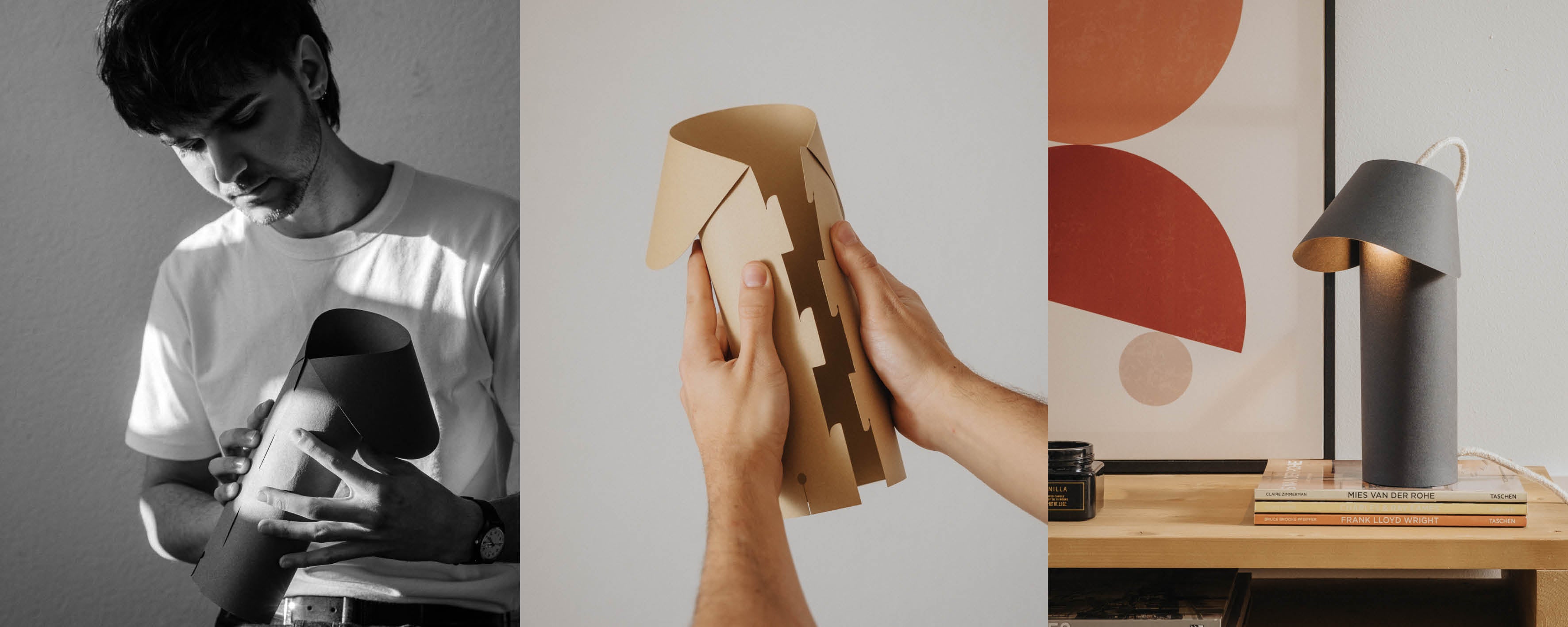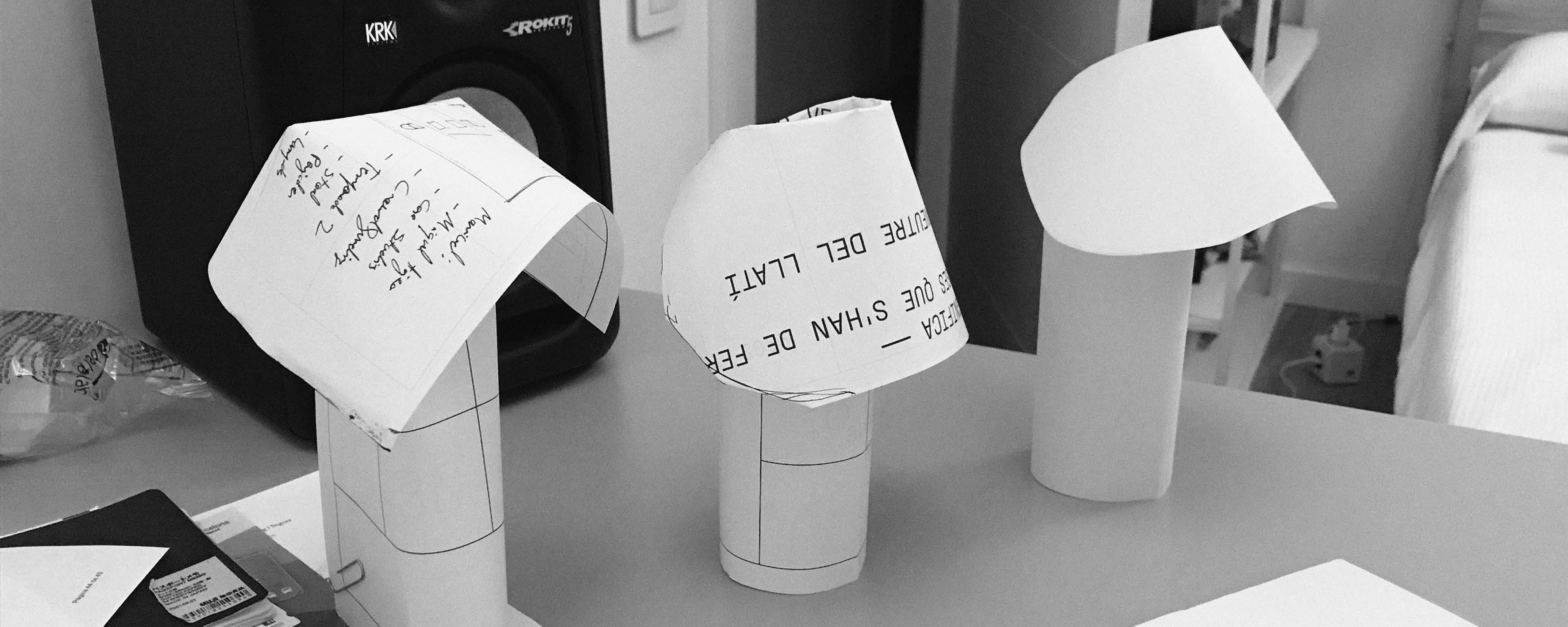Sergi Peguera
Sergi Peguera is an Industrial Designer with a strong passion for creating accessible and environmentally responsible products. He graduated in Industrial Design from the Elisava School of Design and Engineering in Barcelona. Sergi has worked as part of the design team at multiple established companies and has also collaborated with local designers on semi-artisanal projects.
Product lines: Carta Line
How would you describe your personal approach to design?
I’ve actually just finished my degree, so I haven’t had the time yet to think about my approach towards design. However, what I do feel comfortable with is the constant practice and experimentation. I also enjoy the freedom to propose ideas from a new perspective, which is inherently linked to my vision of the world and the future.
Who have been your main design references or inspirations?
I don’t have many references from the design world. It is true that many of my projects start from music, with sensations that I later translate into designs. I focus more on feeling without logic or structure, and then I bring it down to curves, lines, textures, materials... I hate Pinterest and the algorithms. I think it’s vague to take references from there. They show design for the sake of design —which I’m not saying is wrong— but for me, design is so much more.
How does sustainability influence your choice of materials and design processes?
Depending on the needs of the project, I either establish it as the backbone from which I conceptualize and then design, or it moves more into the development phase. For the design of Carta, it’s clear that the choice of materials, industrial processes, and the way it is shipped were the key elements that defined the product.
How did the initial idea of the Carta Lamp 001 come about?
During the summer of 2022, while I was waiting for an online meeting, I had papers on the table with drawings and a to-do list. I began folding these papers to see where it would lead, and I ended up with a shape that I found very attractive. I created a visor using just a sheet of paper. Afterwards, I started perfecting the shape with other papers and scales to find the proportions I liked the most.
What are the experiences you would like people to feel when they use the Carta Lamp 001?
I feel that part of the fun of sending it disassembled is that the end user, when assembling it, feels that it’s theirs. Also, the tactility of the paper is very familiar, and I think it makes it both down-to-earth and photogenic.
From your perspective, what does the Carta Lamp 001 bring to the world of design that differentiates it from other lamps in the same sector?
Its radical nature, undoubtedly. It's like making a bold statement to show that things can be done differently, prioritizing materials and processes with minimal impact and reducing the carbon footprint without compromising aesthetics. It's also because choosing this kind of design is choosing the future we want.
When you were designing the lamp, what spaces did you think it would fit in?
At first, I was imagining the lamp in domestic environments, but I also imagined it for a more commercial client—restaurants, hotels, offices… It could even have an outdoor version by
changing the materials.
In what direction do you think the world of industrial and lighting design should go?
We should see design as a tool for transformation. First, I think we should slow down and consume less. Then, we should ask ourselves what we truly need. As designers, we must identify when it’s necessary to create a new product and understand its purpose. If we keep designing, it should be to do it much better than it has been done until now.


